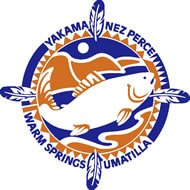A quick update on the coal train exports front (which I’m henceforth going to start calling the Asian Coal Express, unless anyone else has any better suggestions. Leave ’em in the comments!)
The New York Times ran a must-read piece for anyone concerned about coal companies targeting American taxpayer-owned public lands, carting it by rail over to coastal ports throughout the Pacific Northwest, loading it onto barges and Panamax vessels, and then shipping it overseas to sell at a steep discount to Asian markets.
The article looks at the battle over the Northwest export terminals through the lens of the local American Indian tribes, who worry about the impacts on local fishing rights and the threats to sacred sites.
(As an aside, the article also has an utterly beautiful lede sentence, which just tickled the writer in me: “At age 94, Mary Helen Cagey, an elder of the Lummi Indian tribe, has seen a lot of yesterdays.” That there should be reason enough for you to click through and read the whole piece!)
The Pacific Northwest tribes have formed a unified front that may well prove to be the strongest forces of opposition to the coal export terminals.
The tribes’ chief concern is the impact of coal dust along the rail routes, at the terminals, and in the rivers, as the barges float through crucial fishing areas that have been used for centuries, and protected by an array of treaties and rights for decades.
Fifty-seven tribes, speaking through the regional congress, the Affiliated Tribes of Northwest Indians, are demanding a full environmental impact analysis that would involve all six of the currently proposed export terminals. As DeSmog reported last week, the environmental assessments and approval are currently limited to a case-by-case basis, and the Army Corps of Engineers is taking a very limited scope of the impacts immediately at the sites of the terminals themselves, but nothing up-rail, or down-river.
Brooklyn Baptiste of the Nez Perce Tribe doesn’t believe that this limited environmental assessment is nearly enough. “We deserve the maximum attention and expect the lead and coordinating agencies to provide the full environmental studies on all ports, as they will be making one of the largest decisions impacting human health, the environment and economies of not only our tribal communities, but of our neighboring citizens of the Northwest.”
In a public statement, the Columbia River Inter-Tribal Fish Commission, a fishing-focused group affiliated with the regional congress, make some equally compelling arguments. Two in particular stand out.
Paul Lumley, Executive Director of the commission, explains the geographical context: “Along the Columbia River it’s cliff, highway, railroad, then river. Our communities are wedged between the railroad and the river. We’ve got nowhere to escape. If we cannot escape, neither will the coal.”
Then you have Brian Cladoosby of the Swinomish Tribe echoing those sentiments. “We believe the Northwest is interconnected through the families, resources and waterways, that these coal terminals and railway routes should be addressed in a holistic manner,” said Cladoosby. “If a coal train or tanker were to spill on the route or in the river at Port Morrow in Oregon, the water ways will carry the pollution throughout the Northwest, and coal dust will be carried through the mountains in the air we all breath.”
Spills, crashes and any other inevitable disasters aside, even the status quo process of transporting all this coal on rail and then barge has the very serious potential to pollute. Coal dust is notoriously hard to contain, and communities along both the rail and barge routes could expect their air and water to fall victim to that pollution.
Surely, any legitimate environmental assessment has to consider those operational impacts, and not just the dredging and construction of the terminals themselves.
Subscribe to our newsletter
Stay up to date with DeSmog news and alerts







